Clepsis spectrana
(Treitschke, 1830)
-
 Subfamily: Tortricinae, Archipini
Subfamily: Tortricinae, Archipini -
 Wingspan: 15-24 mm
Wingspan: 15-24 mm -
 Flight period: Jun - Sep
Flight period: Jun - Sep -
 Spread: Common
Spread: Common -
 Host plants: Polyphagous
Host plants: Polyphagous
Information
The Clepsis spectrana also called Cyclamen Tortrix or Cabbage Leafroller is a moth of the Tortricidae family, subfamily Tortricinae,
with wingspan of about 15-24.
Distributed in most of Europe with the exception of Ukraine and Greece, its presence in Spain is doubtful. *
In Italy it is absent from Sardinia. *
The front wings of the Clepsis spectrana pale ocher, with the spotted brown costa, has a
median band extending from a third of the coast with gradual decline in the dorsal and median area of the wing.
A spot of the same color as the median band is present in the sub-apical area, sometimes it can reach the apex. **
In any case, the colouration is extremely variable and the bottom of the front wings varies from whitish ocher to yellowish brown or reddish with brown shades.
The hind wings are translucent white / gray. **
Sexual dimorphism is given by the larger size, by the absence of the costal fold and by the more marked coloration of the median band, in the female.
The eggs are laid in small groups on the food plant, hatching two to three weeks later.
The larvae then feed within a silk net on young leaves. ******
When they reach maximum growth, they pupate in a cocoon of white silk in the larval dwelling or among the dead leaves.
This species is bivoltine. Adults of the first generation are visible from early June to July, sometimes earlier.
A second generation of adults appears in August and September.
The larvae of this second generation of moths feed for a short time before hibernating in silk cocoons,
usually on the food plant to deal with wintering. *******
The larvae reappear in the spring to continue feeding and complete their own, usually pupating in May or June.
In greenhouses, this species has developed a biotype adapted to this microclimate which reproduces continuously. ***, ****, *****, ******
The eggs of Clepsis spectrana are orange, flat and oval; deposited in groups, covered with a cross-linked gelatinous layer. ******
the larva is 18-25 mm long; the colouration varies from brown to gray-olive green, paler dorsally, with whitish tubercles and a pale diffuse line along each side.
The head and prothoracic shield are glossy black or blackish brown. **, *******
The pupa is 9-14 mm long, opaque black with a strong and elongated cremaster. **, *******
Polyphagous species on herbaceous plants, it is an important parasite Ribes nigrum (black currant), Fragaria (strawberry), Rubus (blackberry) and Humulus (hops) and Cyclamen (cyclamen),
but there are many other species on which it develops.
* Lepidoptera mundi https://lepidoptera.eu/ - Fauna Europea https://fauna-eu.org/
** Bestimmungshilfe für die in Europa nachgewiesenen Schmetterlingsarten - http://lepiforum.de/
*** (Alford, 1984)
**** (Alford, 1995)
***** (Van de Vrie 1991)
****** Eurasian Tortricidae 2.0 - https://eurasian-tortricidae.linnaeus.naturalis.nl/
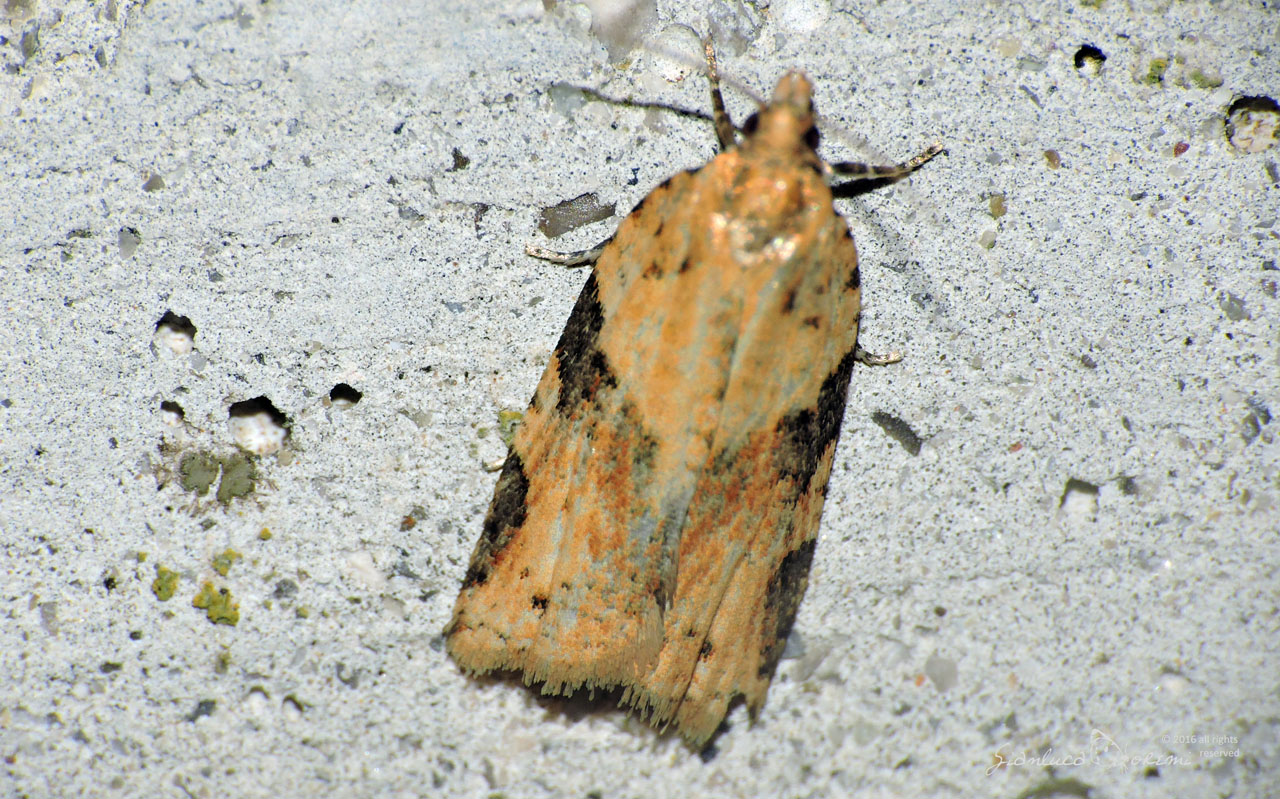
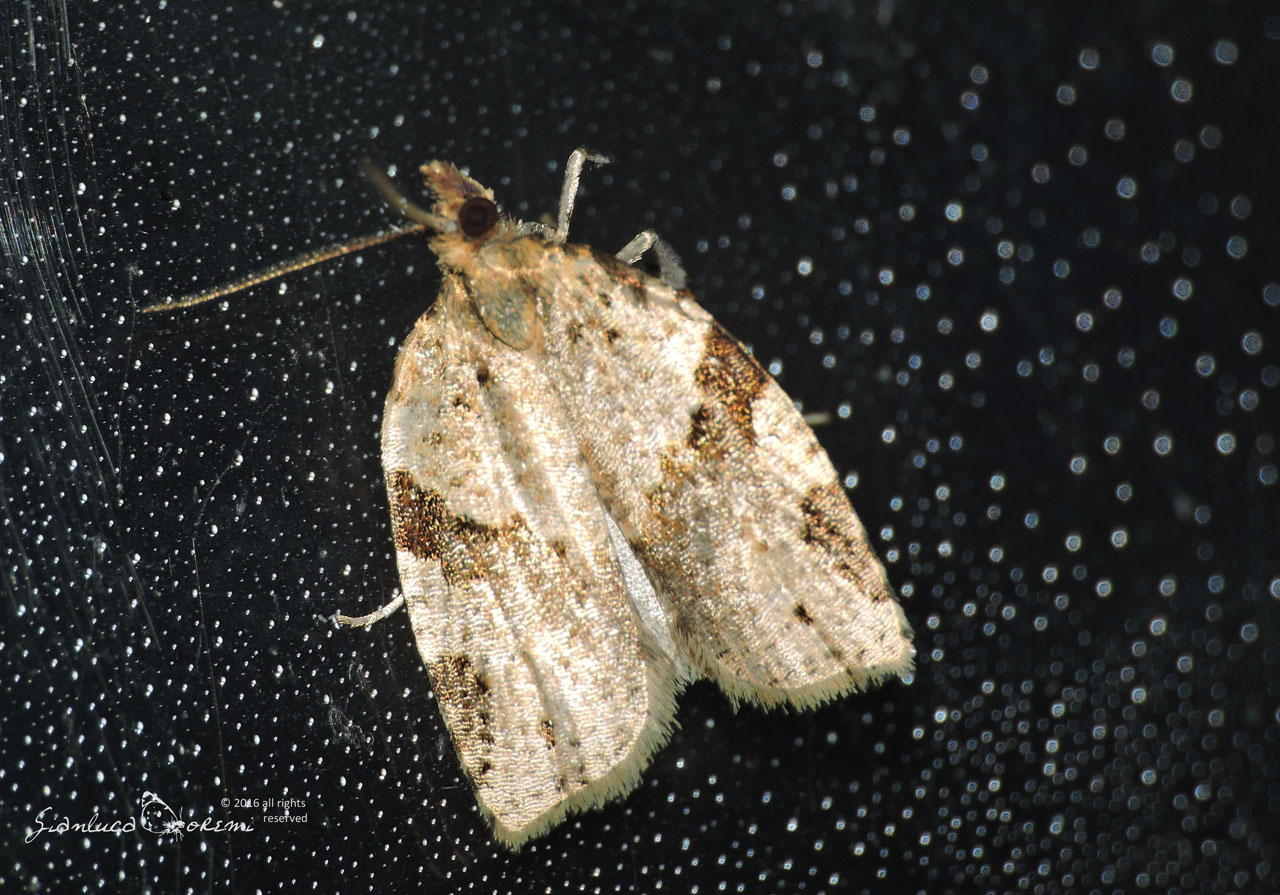


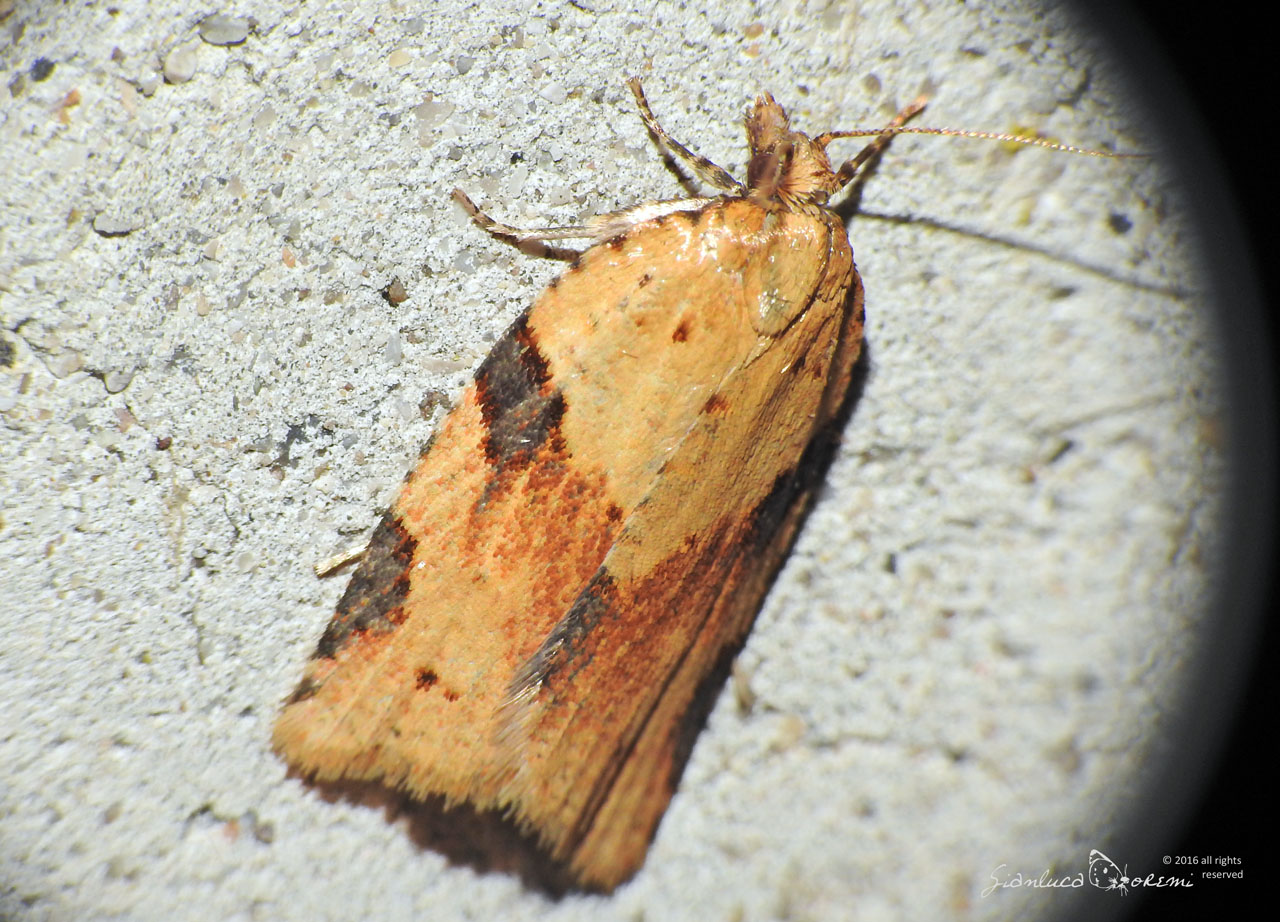


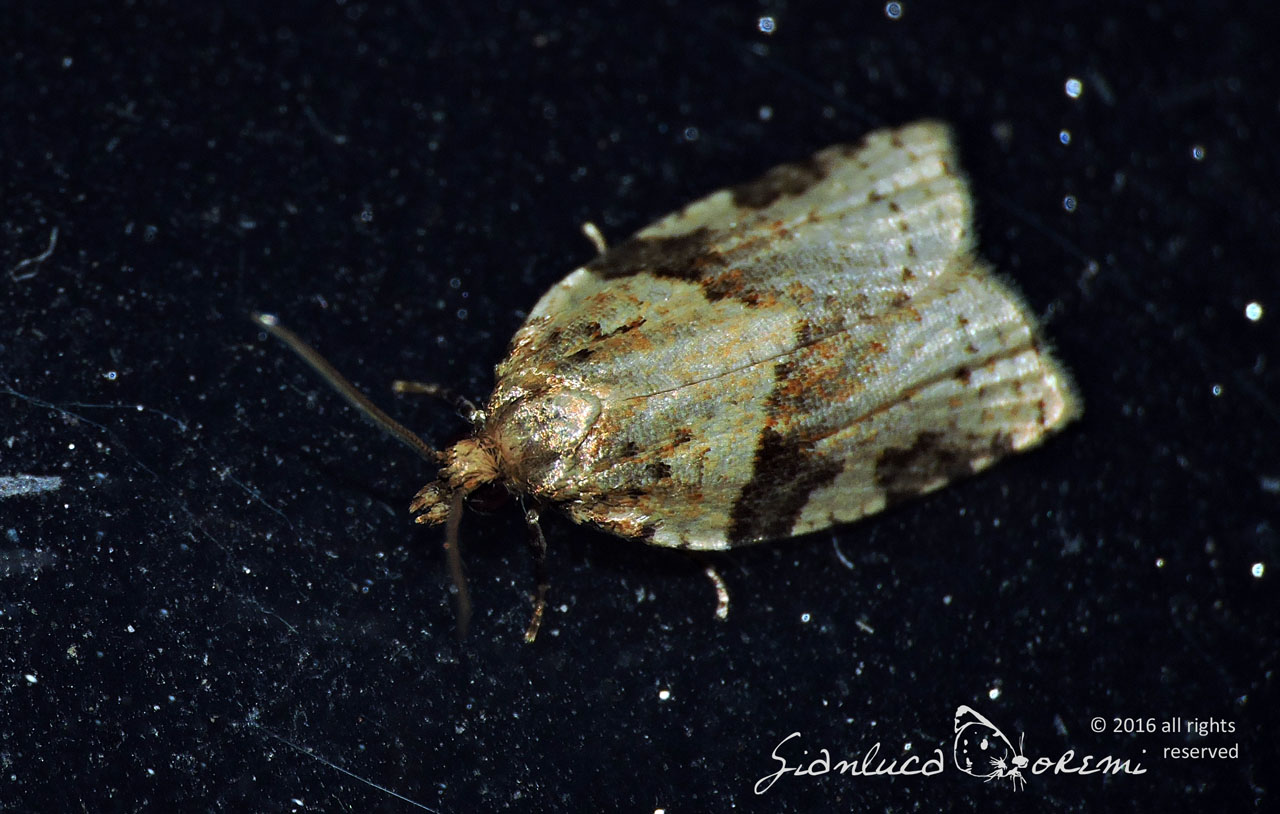


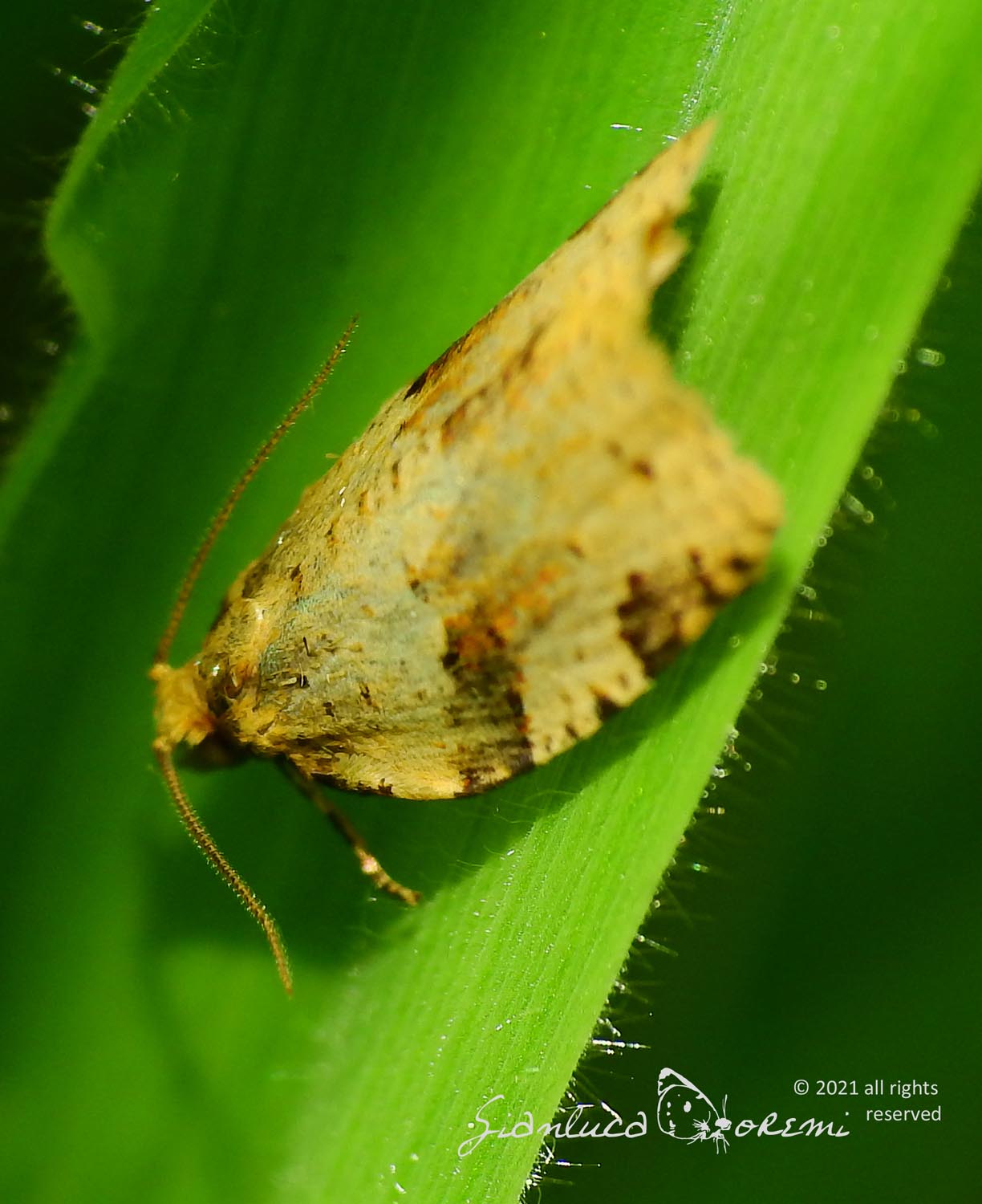
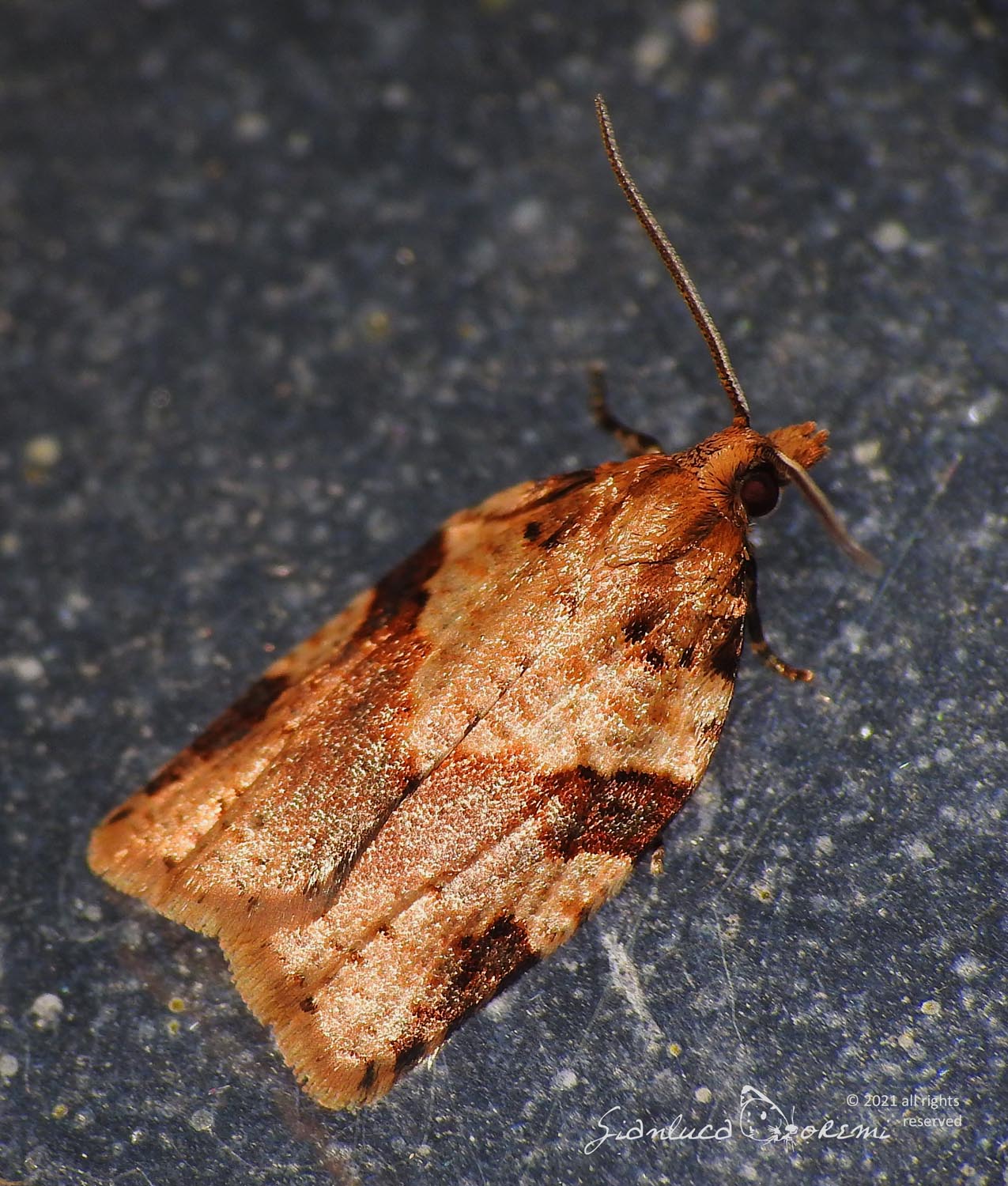
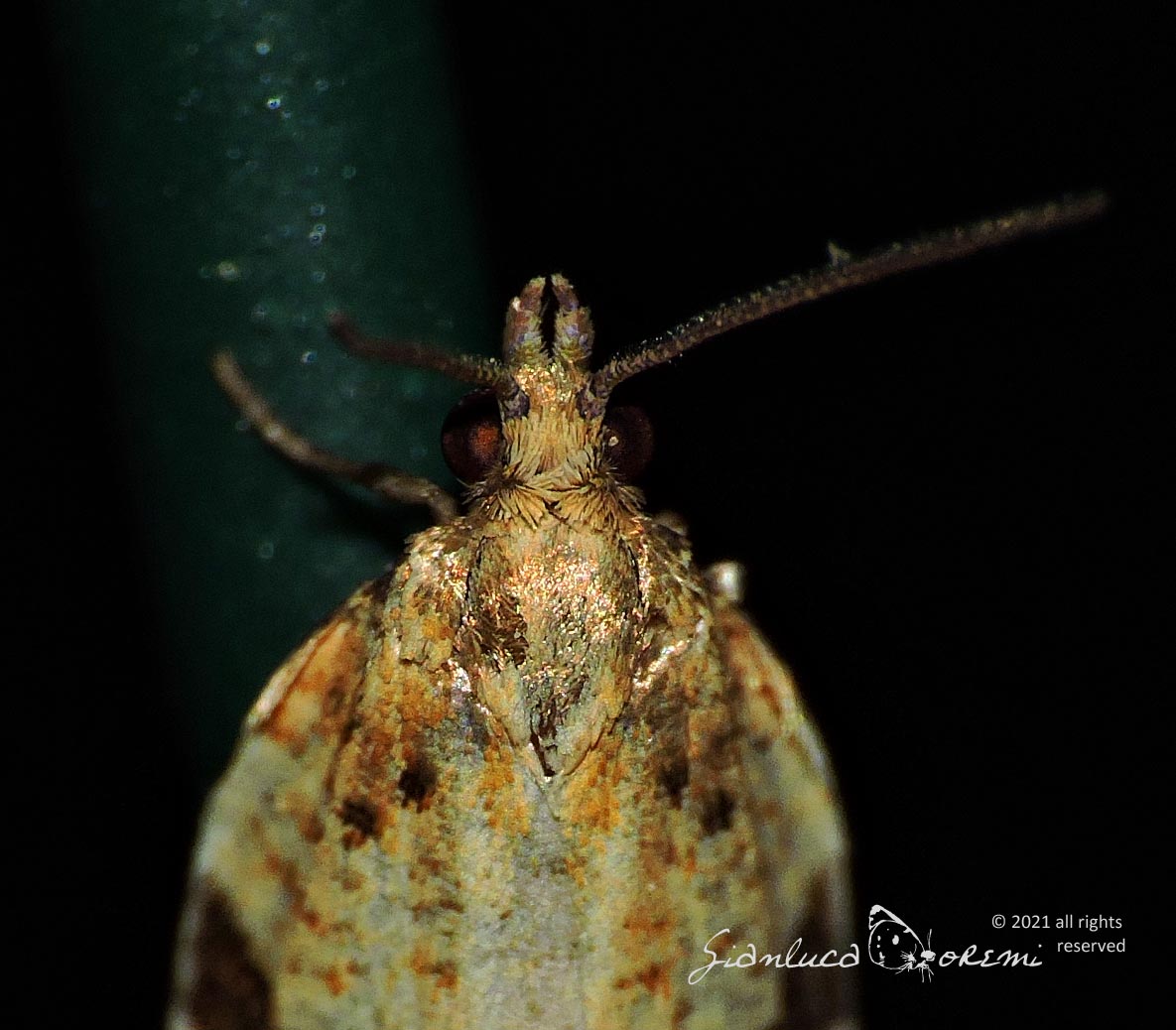
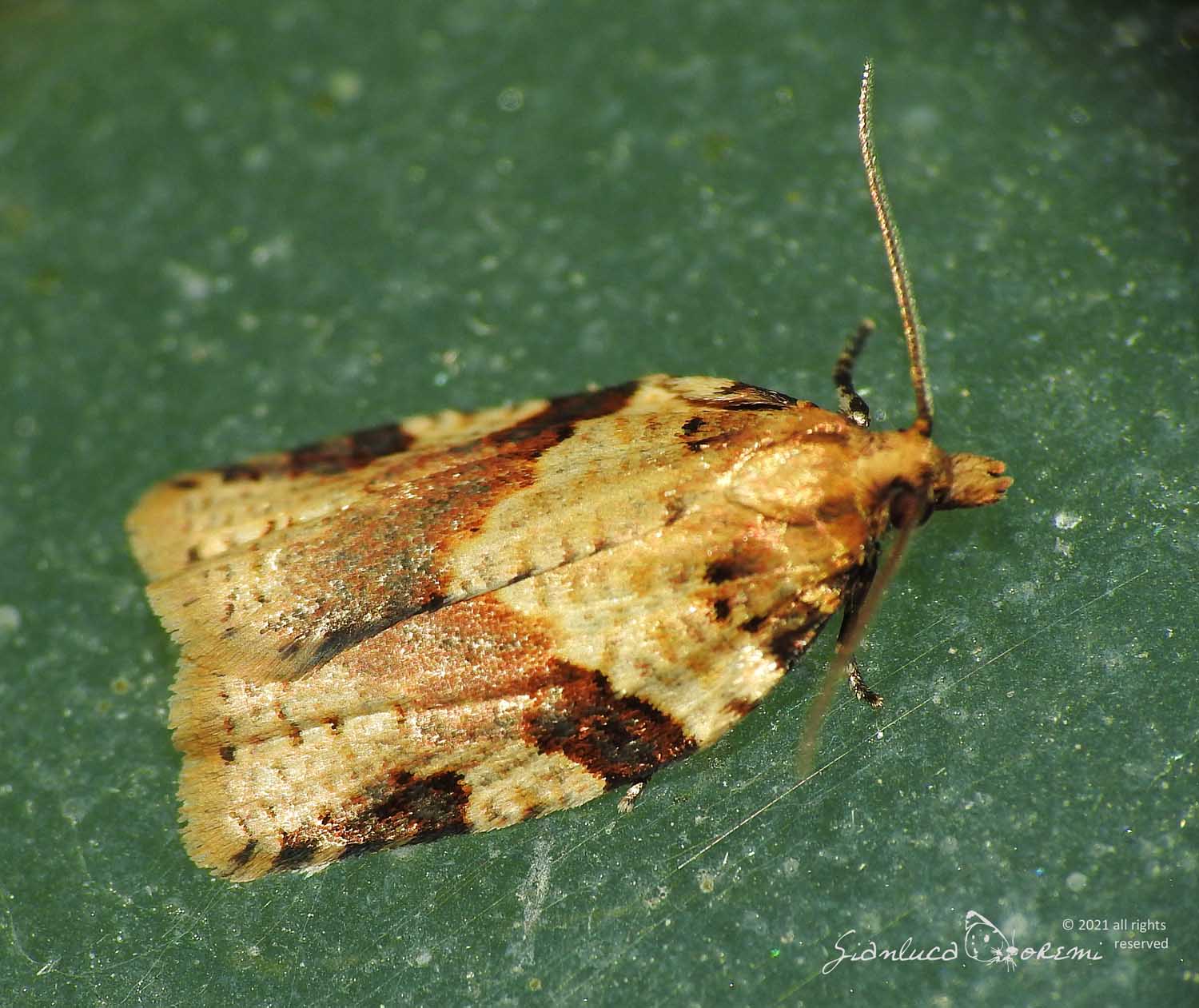
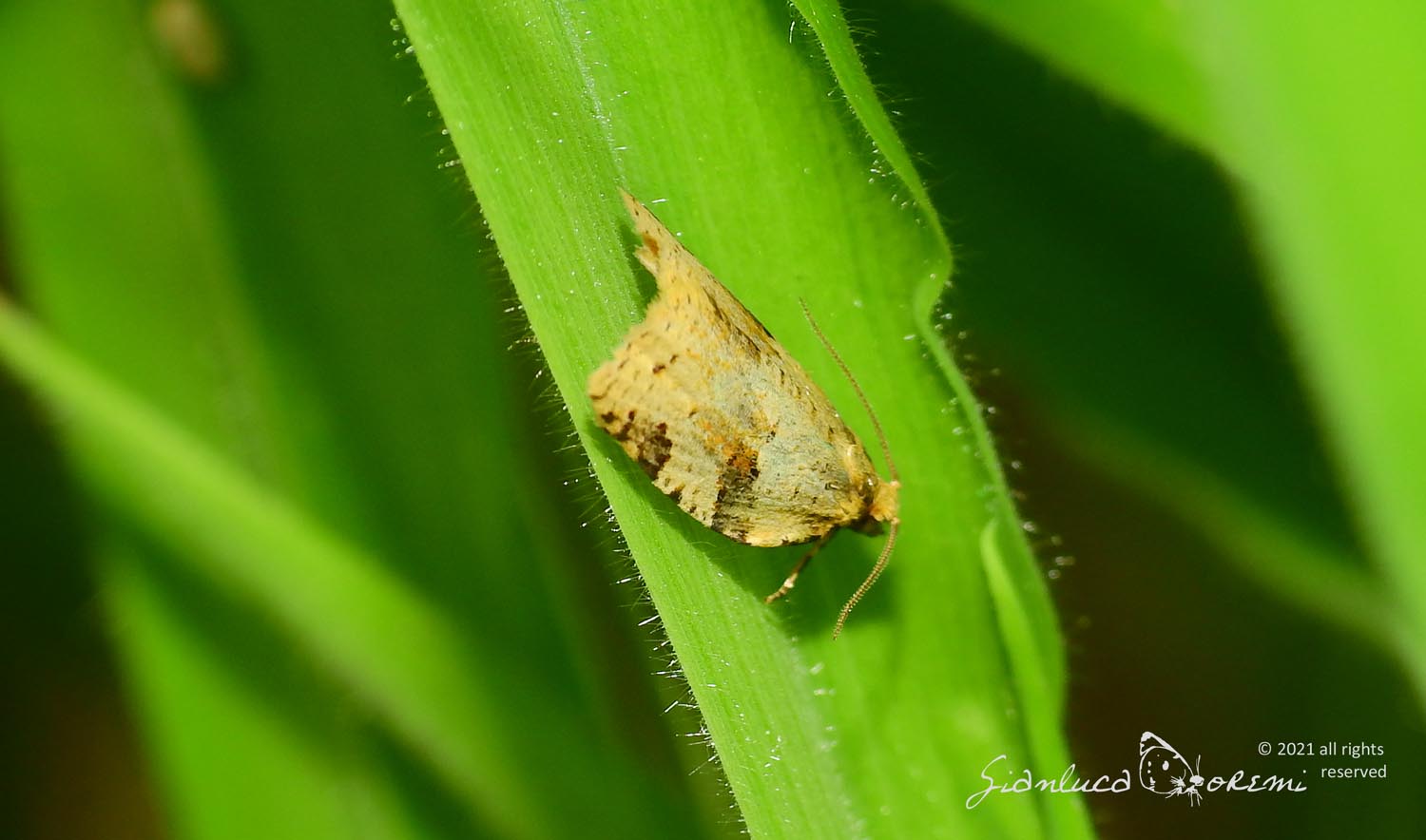

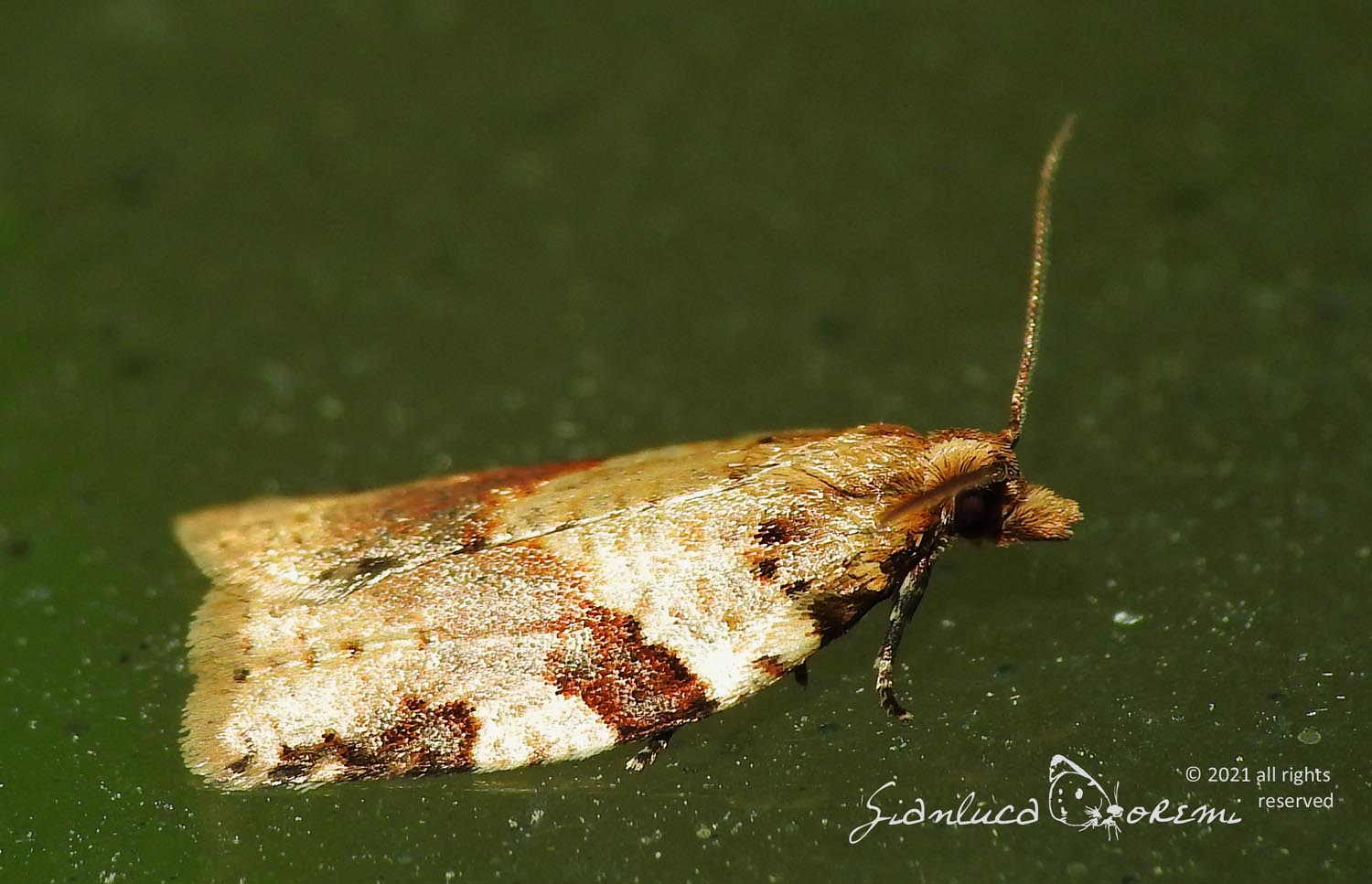

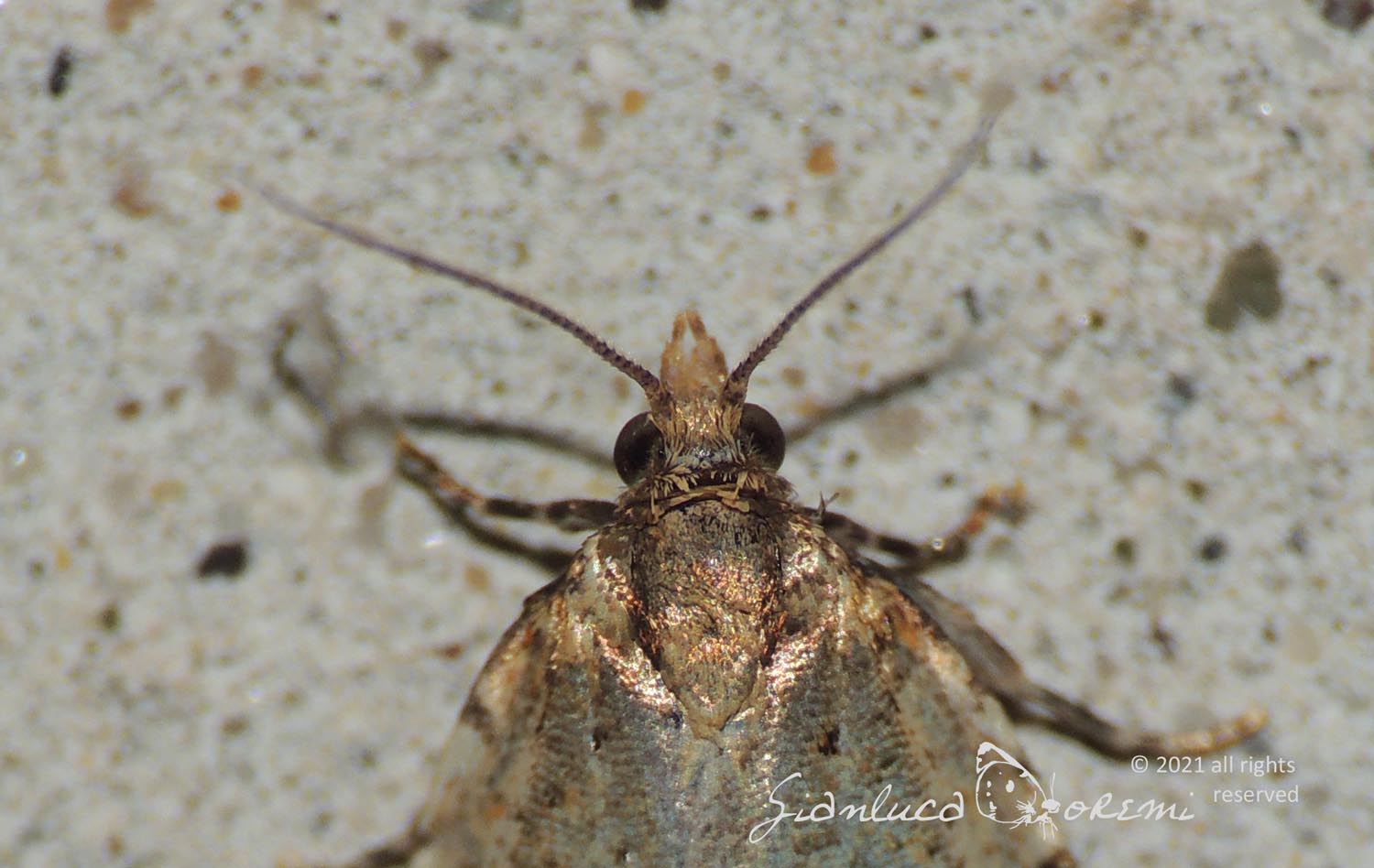
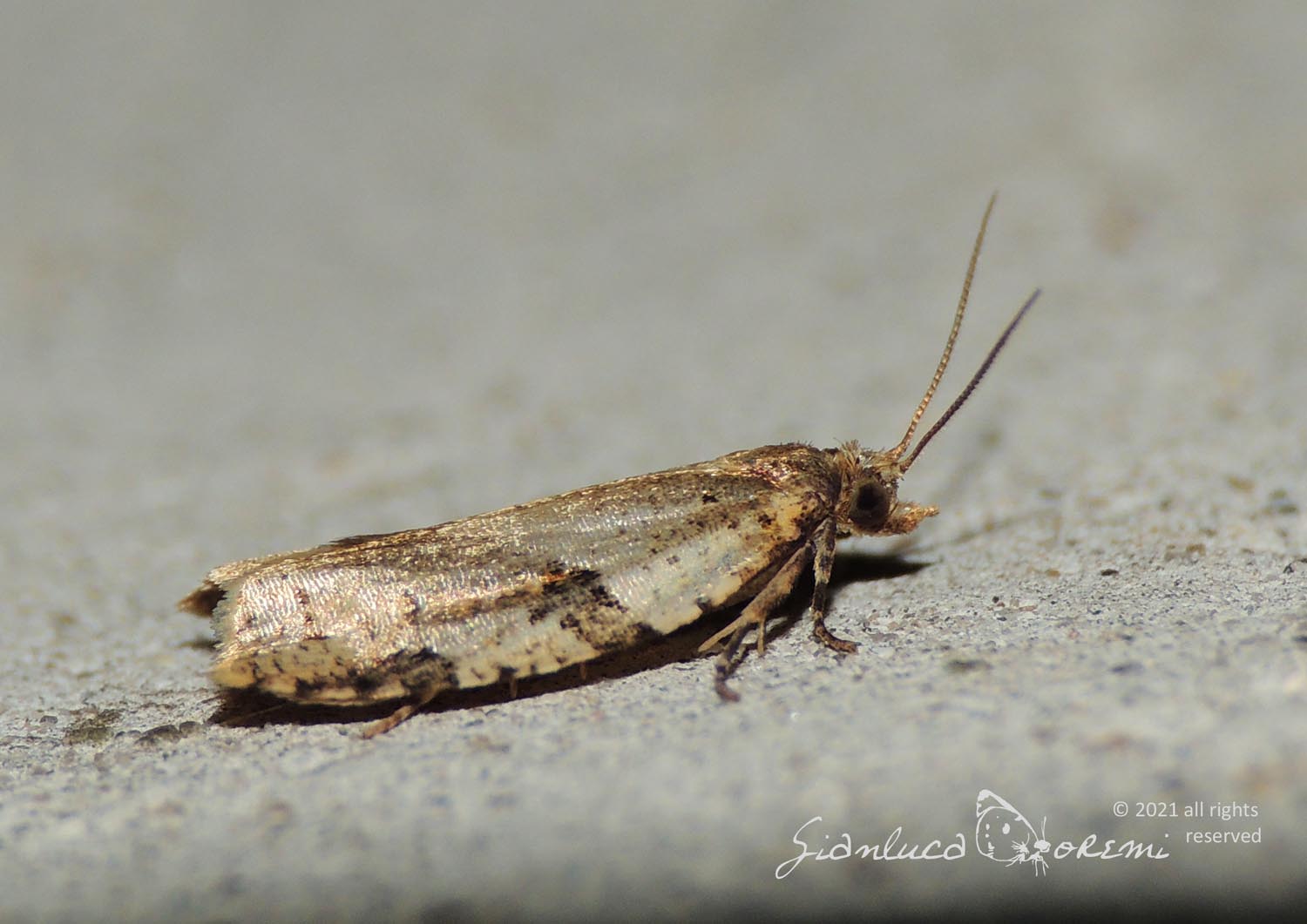
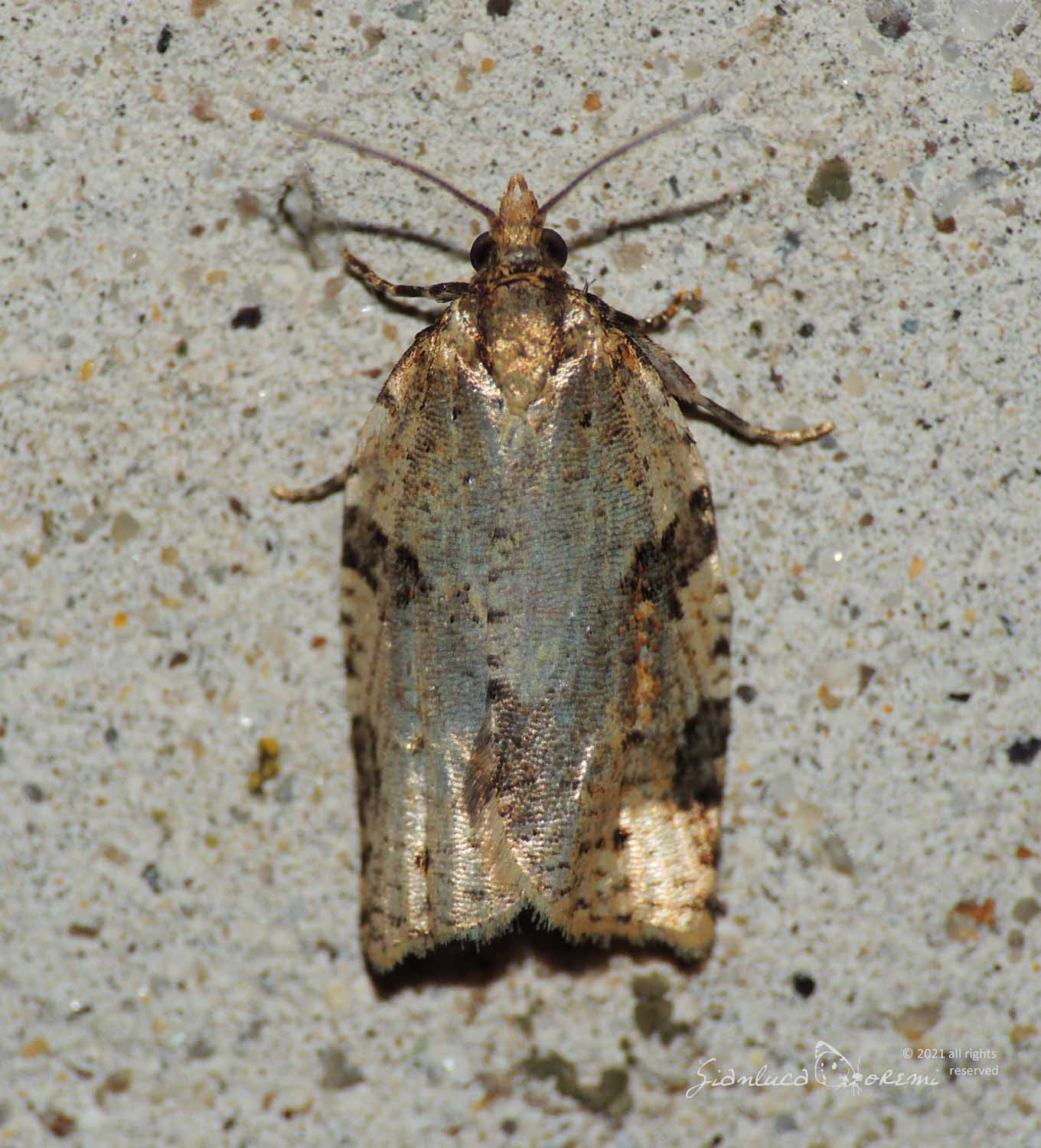

 EN
EN ITA
ITA
Social and publications